
One of the main ways Bridgerton diverges from its source material is in the collection of characters it adds to the story. The Bridgertons themselves and many in their social circle make the move to Netflix more or less the same from the novels, but they are joined by several key figures who help push the narrative along. There are several characters prominently featured in Bridgerton so far who aren’t in the books.
Queen Charlotte
Golda Rosheuvel
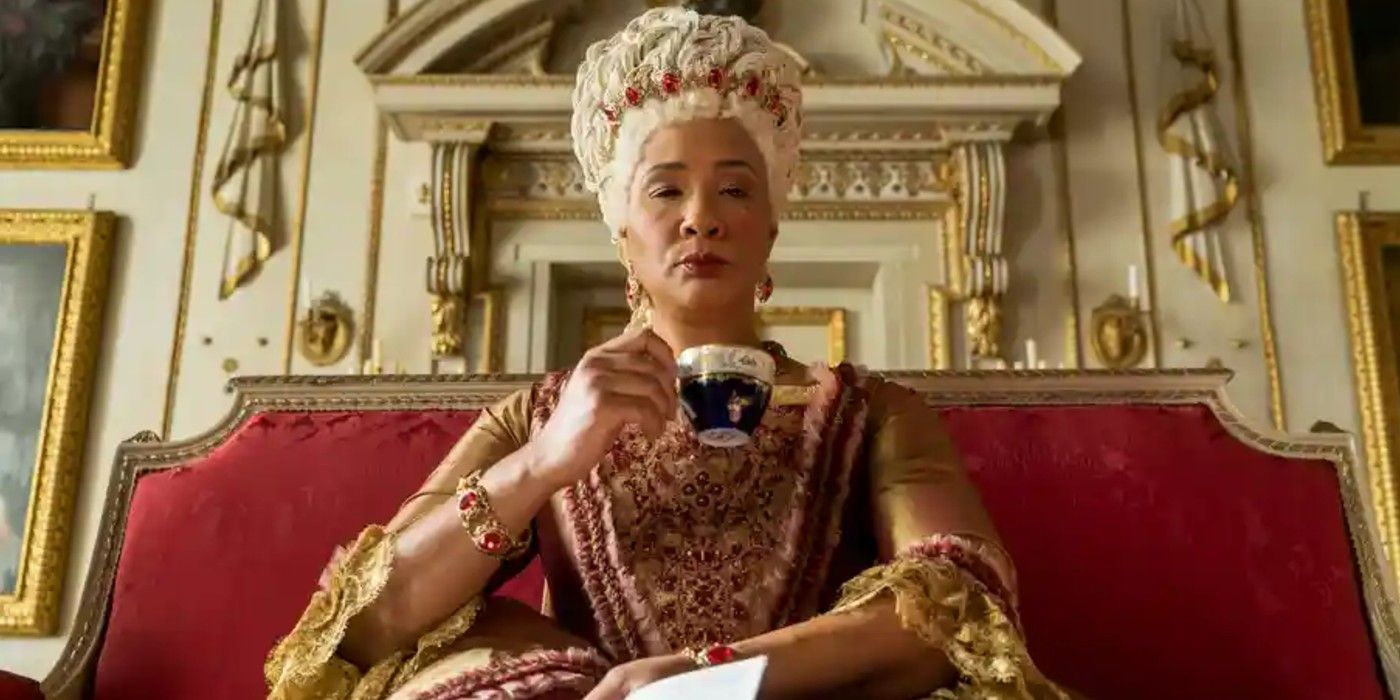

While far from one of the show’s main characters, Queen Charlotte has a huge impact on the overall story of Bridgerton. Her initial praise for Daphne gives her a strong investment in the young woman’s affairs, and the Queen constantly meddles through attempted set-ups and prideful ploys. Charlotte even gets a bit of an arc in the latter part of the season. Seeing her terribly ill husband King George III gives some needed dimension and sympathy for the character, and their royal marriage is an interesting juxtaposition to the series’ other matches.
Overall, she may be more of a plot device than a fully-featured character, but she’s also a lot of fun. Bridgerton’s distinct aesthetic is a big part of its appeal, and every single one of Queen Charlotte’s hairdos and tiny dogs adds to that colorful, powerful style. Charlotte has also proven so popular that she got her own spin-off series focused on her initial meeting with George and falling in love with him.
Charlotte also plays an important role in the show’s fictionalized world-building, as her marriage to the king is seemingly one of the main reasons why people of color have been given reparations of land and political power. The show’s alternate racial history is one of its more interesting elements, though the first season barely touches on it at all.
Prince Friederich
Freddie Stroma



In the first novel, The Duke and I, Daphne is several steps removed from being the season’s “diamond,” as she is in the show. The book shows her in her second season, having already moved through her first year of eligibility without a marriage match. She has much more trouble attracting suitors in Quinn’s version, which makes her relationship with Simon a bit different as well.
In the show, Daphne is much more popular in the marriage market, even attracting the affection of a foreign prince. Bridgerton‘s Prince Friedrich, the prince of Prussia, plays a small but significant role in season 1, but he does not appear in the novels at all. Friedrich offers Daphne an alternate future to her convoluted love affair with the Duke, presenting himself as an all-around good and respectful guy.
In some ways, he might have been a better pairing, though Daphne and Simon eventually manage to work through the struggles together. While it seems unlikely that Prince Friedrich would return in future seasons, it would be a fun reprisal. He’s an easily likable character after all, and certainly deserving of finding love.
Siena Rosso
Sabrina Bartlett
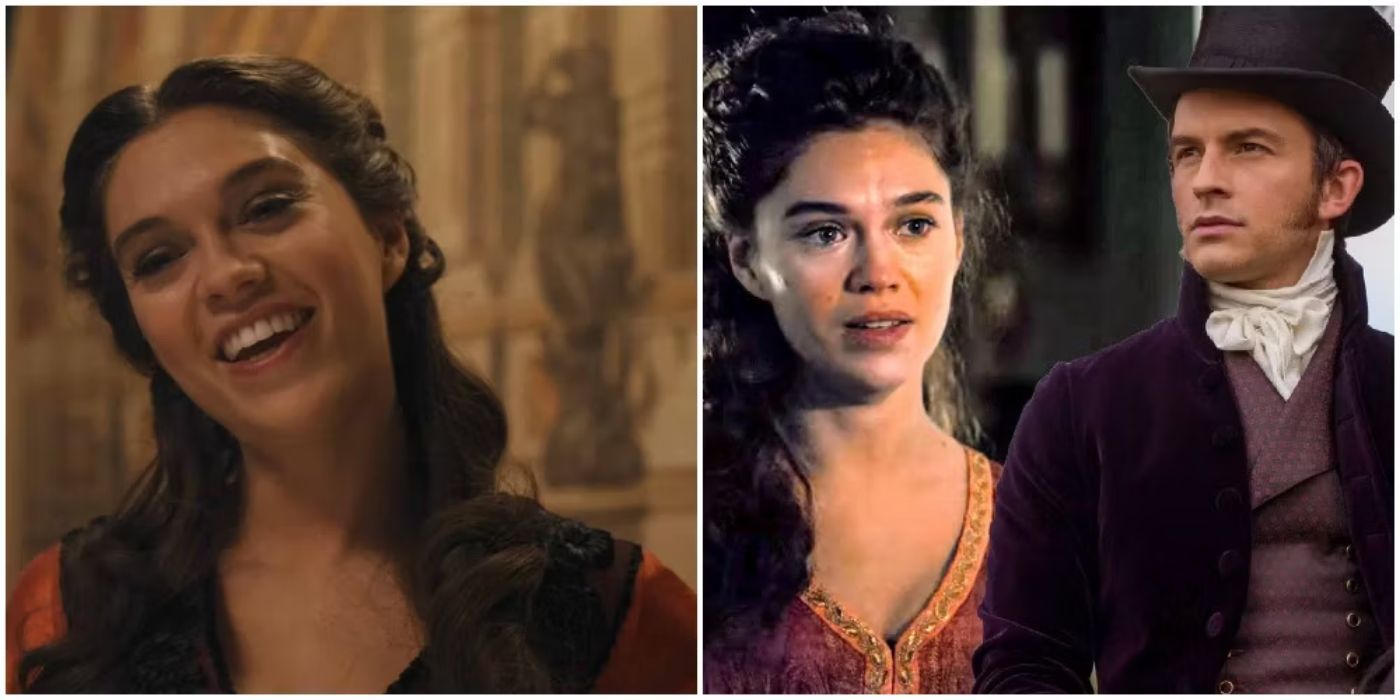


One of Bridgerton’s bigger romance plotlines is that of the Viscount Anthony Bridgerton and his opera singer mistress, Siena Rosso in the first season. The books do have a parallel for Siena – an opera singer named Maria Rosso who appears later in the series – but her role is much smaller, and Siena’s relationship with Anthony is much more substantial and dramatic.
In the show, Siena represents everything Anthony can’t have: a free life, without the undesired responsibilities and restrictions of leading a notable family. Anthony believes he’s been doing a good job at keeping their affair a secret, but even Violet knows that her son is seeing the opera singer. When Siena grows tired of Anthony stringing her along, she is the one to finally make a clean break of him. The affair between Siena and Anthony ends concretely at the end of season 1.
Will and Alice Mondrich
Emma Naomi and Martins Imhangbe
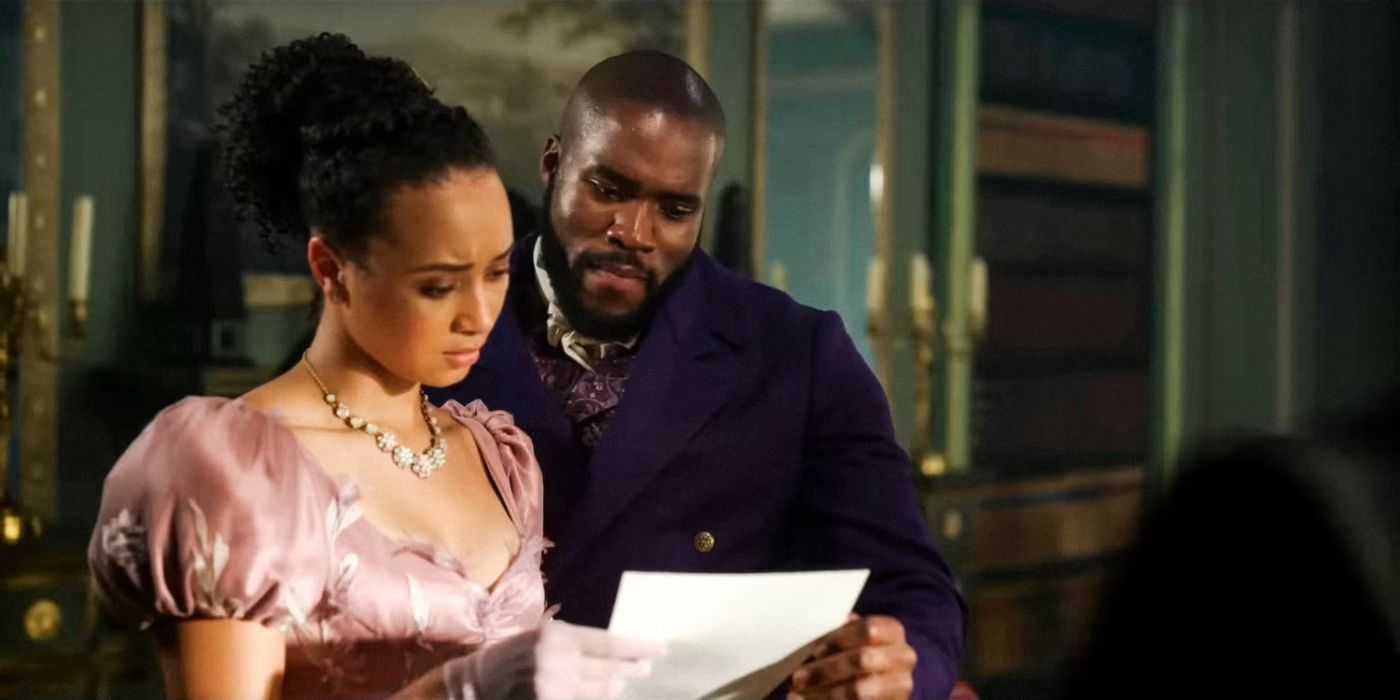


Both Mondriches are well-written and wonderfully played
A breath of fresh air and much-needed juxtaposition to the once-worn gowns and suffocating formalities of high society, Will and Alice Mondrich enter the Bridgerton story largely as accessories to Simon’s personal arc in the first season. By the end of it though, they become much more fully-developed, with Will getting his own story about balancing professional pride with family loyalty. Both Mondriches are well-written and wonderfully played, even for their relatively small amount of screen time early in the show.
In season 3, Bridgerton expanded their roles, allowing them to become even more friendly with the Bridgerton brothers with Simon and Daphne no longer appearing in the show. Colin, Benedict, and Anthony frequent the club the Mondrich family owns, and Alice discovers that a distant relation has left everything to their eldest son, making them new, titled, members of the ton. Their storyline allows the show to explore how stifling the ton can be and how often the rules are made to keep outsiders from gaining any ground.
The Baron Featherington
Ben Miller



Lord Featherington does not appear in Quinn’s novels, as he is already dead when they begin, which will certainly be a surprise to Bridgerton fans unfamiliar with the source novels. The show resurrects him and makes him a pretty important figure in the story, as he justifies both Marina Thompson’s extended stay with the Featheringtons and the poor fortunes of the rest of the family. He’s a generally detestable and pitiable figure, but his death at the end of season 1 is one of the more interesting twists as it places the Featherington women into survival mode.
Of course, his place in the show also means that the series has eliminated a character from the novels for the series. Portia Featherington’s second husband is where her youngest daughter Felicity comes from. In the novels, Felicity, like Penelope, is friendly with the Bridgerton family, and Portia even mistakenly believes that Colin wants to marry Felicity at one point.
Henry Granville
Julian Ovenden



One of the more altered stories in Bridgerton is that of the eponymous family’s second son, Benedict. Benedict leads a largely independent arc through the first season, which sees him diverging farther and farther from his family’s proper society life and closer to a looser, more bohemian lifestyle. He begins an affair with a tradeswoman – Madam Delacroix – and starts hanging out in the art studio of Henry Granville, a gay painter and gentleman of the town.
For a while it looks like the two are headed for a budding romance
Granville is an entirely new character for the series. He directs most of Benedict’s early narrative growth, and for a while it looks like the two are headed for a budding romance. Unfortunately, season 1 stops short of that and settles for a solid bit of queerbaiting. Still, Henry is an excellent character with a few great monologues, and his countercultural influence on Benedict will hopefully only grow as the show continues.
Genevieve Delacroix
Kathryn Drysdale
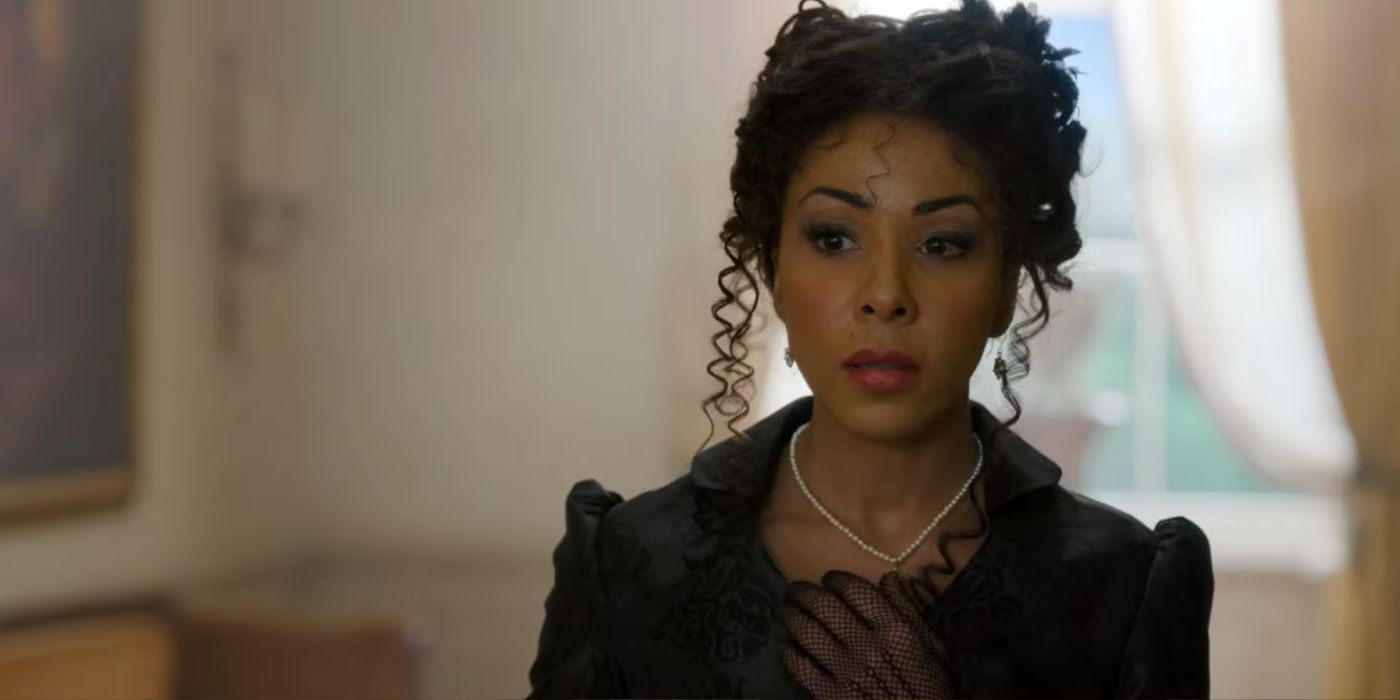


The other central player in Benedict’s arc, Madam Delacroix, is also a new addition for the show. Genevieve plays a pretty major role in the overarching story, partially as Benedict’s eventual lover, but mostly as a red herring for Bridgerton‘s Lady Whistledown twist.
The modiste is built up cleverly and convincingly to be the secret rumormonger, but the season 1 finale twists that theory on its head in a fun and fascinating way. Genevieve is still a compelling character outside of all that though, and the fake French accent she uses to trick the pompous ladies of the town is particularly entertaining. She turns out to be one of the only people who knows that Penelope Featherington is really Lady Whistledown as the two businesswomen often work together. She makes for a great addition to the series.
Theo Sharpe
Calam Lynch



Season 2 of Bridgerton introduces Theo Sharpe. He works for the printer who distributes Lady Whistledown’s society papers and is someone Eloise takes a liking to, but not because of his connection to Whistledown. When she meets him, he provides her with literature about women’s freedoms and makes her look outside of the safety of the ton. Theo marks the first time Eloise seems to be interested in even the possibility of courting someone.
Theo has no presence in the book as Eloise’s storyline in the book is actually very different. She’s never outed for her participation in so-called rebel activities by Whistledown and doesn’t discover Penelope’s secret until everyone else does. Theo makes for a great addition to Eloise’s story because, despite her feeling trapped by the marriage mart, she’s never really experienced life outside of the ton.
Lord Jack Featherington
Rupert Francis Young

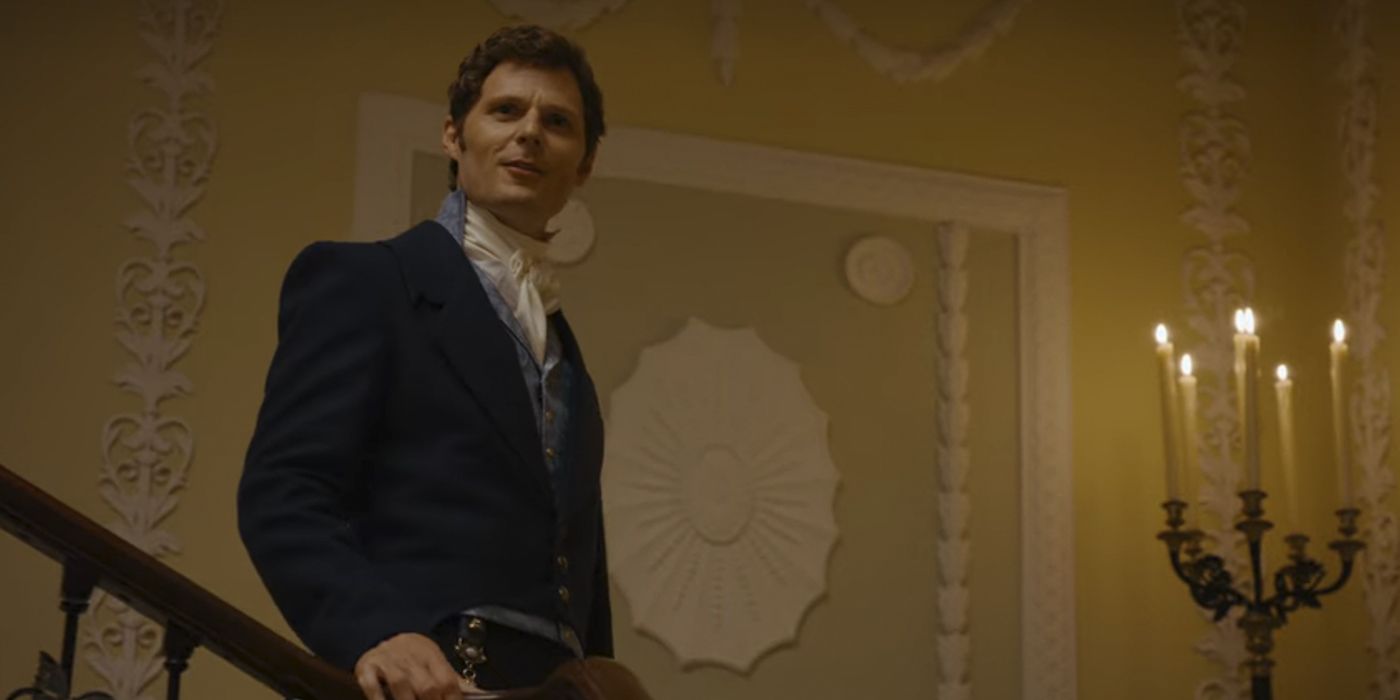

After Baron Featherington dies in the first season, his estate passes to the next closest male relative instead of his wife or daughters because that is how titled land works in the Regency era. The Featherington women have never met their distant cousin Jack when he moves right into the house and takes over the main rooms in season 2.
Unlike many of the other characters the show has added, Jack Featherington is not one of the favorable creations for the show. He’s a con artist who decides to scam the members of the ton, getting them to invest in his mines that never actually produce gems. The storyline in season 2 drags and takes away from the main plot of the season, which is why, despite the performance by the actor being stellar, the audience welcomed Colin Bridgerton exposing his lies and getting him to leave town at the end of season 2.
Lord Alfred Debling
Sam Phillips



When Penelope Featherington gets serious about finding a husband in Bridgerton season 3, her storyline is a huge departure from the books. For starters, she and Colin don’t get together for years down the line in the books. Penelope spends roughly a decade writing as Lady Whistledown, living in her mother’s home, and coming to accept her life as a spinster. There is no Lord Alfred Debling courting her.
Debling makes for an interesting addition to the series because he is so drastically different from the rest of the ton. He’s a vegetarian and an explorer. He longs to explore the places of the world that humans don’t frequent. He and Penelope connect because they are both outsiders. Even though he admits he can never love Penelope, he shows her a large amount of kindness.
Lady Tilley Arnold
Hannah New

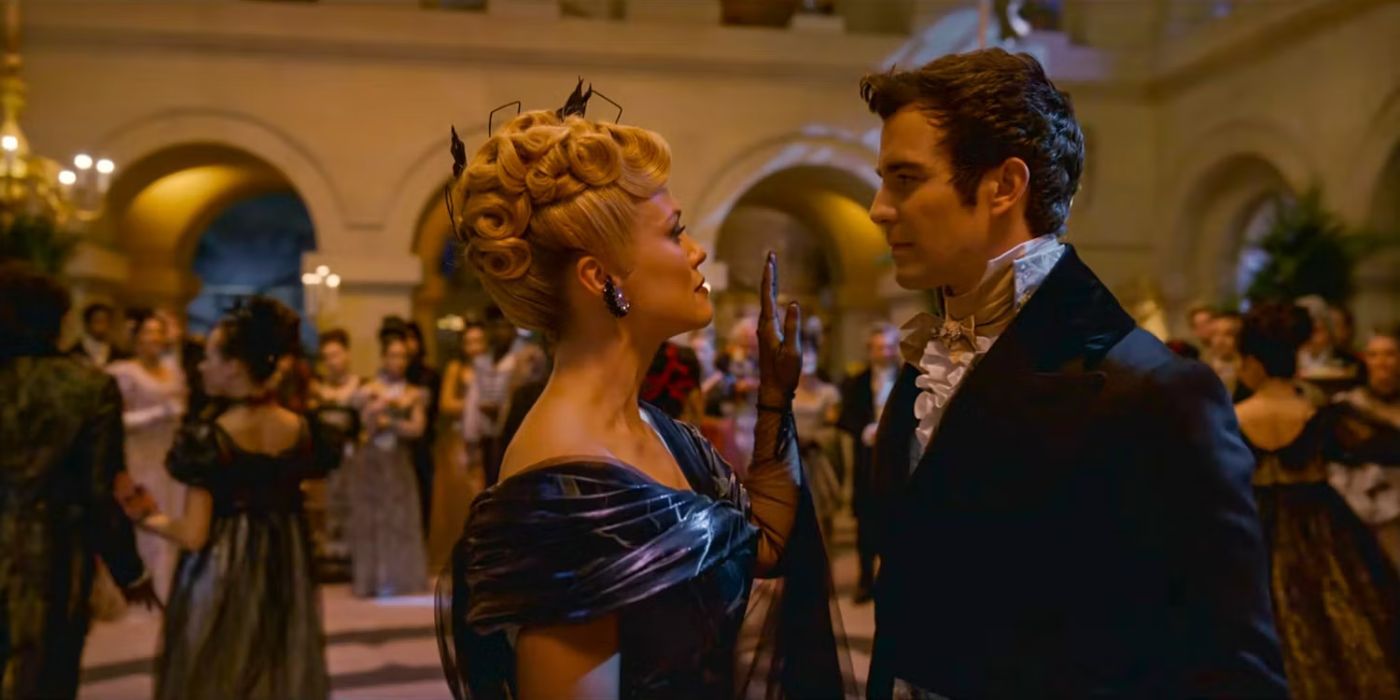

Just as many of the other love interests for the Bridgerton siblings are not in the Bridgerton novels, neither is Lady Tilley Arnold. Introduced in season 3 of the series, she is a widow who piques Benedict’s interest when their paths cross. The two engage in a flirtation and a sexual relationship, but in season 3, part 1, there doesn’t seem to be more to their relationship than that.
Lady Arnold seems to have some freedom as she is wealthy and unafraid to speak her mind, even in a room full of men of the ton. She makes for a stark contrast to the other women that the Bridgerton family sees on the social scene. So many of the love interests for the Bridgerton siblings who are not in the novels, however, only appear in a handful of episodes before moving on





